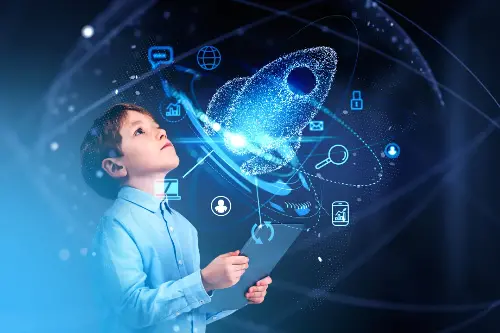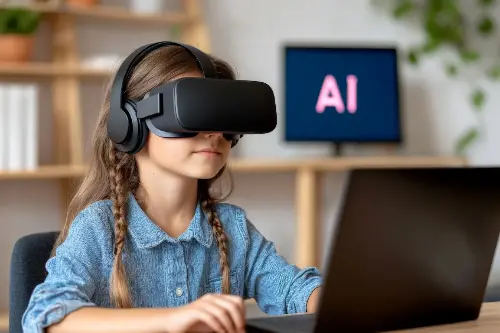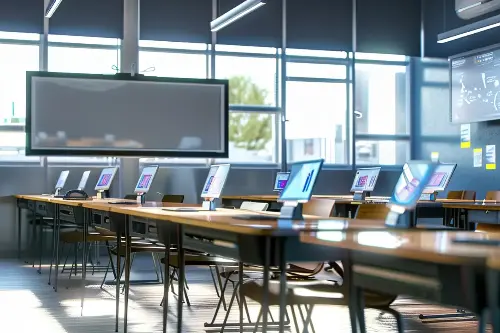The education sector has experienced a monumental shift as we've moved away from dusty chalkboards and towards sleek tablets. A silent revolution has taken place within our classrooms, and its impact on teaching and learning cannot be overstated. The classic picture of education once involved rows of desks, a chalkboard at the front of a room etched with notes, and a teacher delivering lessons in a one-size-fits-all manner. Today, the image looks vastly different. Through integrating technology into educational practices, we are now witnessing an era where the potential for personalised learning experiences is blossoming.

Leveraging the Digital Advantage
The proliferation of tablets in educational settings offers a clear illustration of this new digital landscape. Unlike traditional textbooks and resources, which could quickly become outdated, tablets can provide access to the most current information available. This ability to update learning materials in real-time ensures students are always accessing the most accurate sources possible. What's more, in terms of engagement, multimedia features like videos, interactive quizzes, and educational games keep learners motivated and enthusiastic about their studies.
Education technology's role has been to make learning more accessible, inclusive, and engaging. These digital advancements foster a highly interactive environment where learners can receive instant feedback, a component of learning that is crucial to building resilient individuals. Smart software can adapt to a student's needs, offering more challenging material when concepts are understood, or revising basics when certain topics haven't been mastered yet. This tailoring is creating a generation of learners who are better equipped to process information, problem-solve, and think critically.
Embracing Change and Nurturing Digital Natives
As educators embrace this digital transformation, we are recognising potential challenges and benefits alike. On the one hand, integrating technology in education breeds a class of 'digital natives'—learners who are incredibly fluent with technology because they've grown up with it. These individuals often exhibit an innate ability to adapt to new digital environments and tools, a skill that will serve them well in the future workforce.
However, it is essential that this integration goes hand in hand with teaching digital literacy. As students make use of these tools to access vast amounts of information, it becomes crucial for them to learn how to discern reliable sources, understand digital footprints, and practise safe online behaviour.

Tailoring Education to Individual Needs
The traditional model of education often operated on the implicit assumption that all learners absorb information in the same manner and at the same pace. The digital learning era counters this by offering a wealth of opportunities to cater to different learning styles and speeds. Visual learners can benefit from interactive and graphical content, whereas auditory learners might gravitate towards educational podcasts or recordings.
Moreover, technology enables educational institutions to better support students with special educational needs. Assistive technologies can help those with learning disabilities keep pace with their peers, fostering an inclusive classroom where every student has the opportunity to achieve their potential.
Preparing for the Future
In preparing learners for the future, it's about more than just absorbing facts; it's about building resilience, flexibility, and adaptability. As rapid technological change becomes the new normal, students must also learn to cope with, and even embrace, perpetual change. Technological fluency, therefore, becomes as fundamental as traditional literacies in maths and languages.
Embracing a digital approach doesn't just change how we teach; it transforms what we teach. Curriculum content now needs to include coding, digital communication proficiency, and an understanding of artificial intelligence—subjects that were barely on the education radar a decade ago.

Challenges Along the Way
This is not to say that the transition is without challenges. One of the most prominent issues is the digital divide—the gap between those who have ready access to computers and the internet, and those who do not. Progress is hamstrung by inequality, as not all students have equal access to technology. In turn, educators are tasked with finding ways to ensure equal access and learning opportunities for all children, irrespective of their background.
There's also the concern regarding screen time and its implications on attention spans and well-being. Schools and educators are implementing strategies to counter these challenges, such as digital detox periods, promoting healthy technology use habits, and ensuring that screen time is purposeful and educationally effective.
The Way Forward
To build resilient learners in a digital world, collaboration is key. This era of teaching requires not only the involvement of educators and students but also of parents, policymakers, technology providers, and the wider community. Collectively, these stakeholders must work together to facilitate environments where technology enhances learning without detracting from the essential human elements of education.
While nostalgia for the simplicity of chalkboards might linger, the potential of this new era of teaching carries with it an undeniable excitement. By embracing these changes and recognising the advantages they bring to education, we can fully commit to developing a generation of agile, informed, and resilient learners ready to meet the challenges of the digital world head-on.
